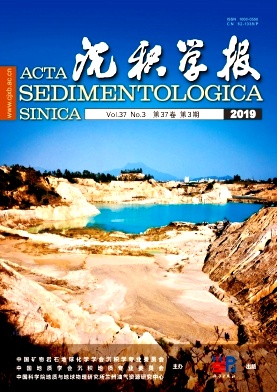Storm Activity Characteristics and Their Sedimentary Responses for the Xiaoerbulak Formation, Lower Cambrian, NW Tarim Basin
doi: 10.14027/j.issn.1000-0550.2018.136
- Received Date: 2018-04-04
- Rev Recd Date: 2018-05-12
- Publish Date: 2019-06-10
-
Key words:
- Tarim Basin /
- Aksu area /
- Xiaoerblak Formation /
- storm deposits /
- bioherm
Abstract: Several different types of tempestites are found in the Xiaoerbulak Formation, Aksu area, Tarim Basin. Tempestites and bioherms have a symbiotic relationship or macroscopic mix growth pattern, with various types of microbial composition in microcosmic aspects. However, little research has performed on this phenomenon. Based on outcrop section observations and thin section identifications, 4 classes and 8 types of bioherm-tempestite sedimentary successions are recognized in the Sugaitblak and Yutixi areas, and the sedimentary model is established. As a result, corresponding locations and characteristics are mainly controlled by "three bases", including mean sea level, fair wave base, and storm wave base, "four stages", including quiet stage, strong stage, weakening stage, and dying-out stage, and "five flow regime", including storm eddy, lower storm back-flow (split into storm turbidity currents and storm debris flow), and upper storm back-flow (split into storm overflow and storm tide). The position of the ancient storm center can also affect the storm deposit characteristics. At last, based on previous research, the origin of the stormy sea with the scarcity of metazoan skeletons is discussed.
| Citation: | BAI Ying, LUO Ping, LIU Wei, CAO YingHui, XU ZhaoHui, WANG Shan, GONG JiYao. Storm Activity Characteristics and Their Sedimentary Responses for the Xiaoerbulak Formation, Lower Cambrian, NW Tarim Basin[J]. Acta Sedimentologica Sinica, 2019, 37(3): 565-578. doi: 10.14027/j.issn.1000-0550.2018.136 |






 DownLoad:
DownLoad: